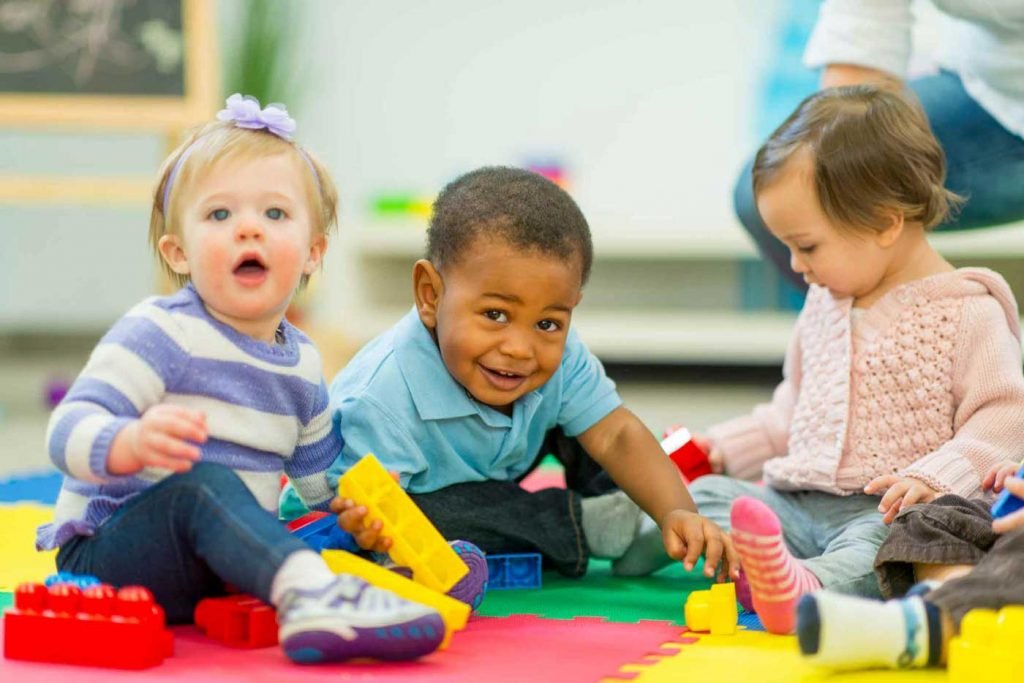For a child who has largely spent most of their life at home with a parent or other caregiver, the move from a home environment to daycare is a huge step. Not only is this transition a challenge for little ones, but it also requires significant adult adjustment as well. Every member of your family is involved, both logistically and emotionally, in any significant schedule change.
Fortunately, there are things you can do to help the change go over as smoothly as possible for both your child and yourself. Read on for tips on how to facilitate a smooth shift for your whole family.
Visit the Facility Together
Regardless of your child’s age, it can be beneficial for both of you to spend some time in the daycare facility together so he or she can feel safer and more comfortable when it’s time for you to drop them off and leave them in this new environment. Schedule a tour together so both of you can get a good feel for the classroom and play areas.
If parent-child tours or visits are not possible, make a special trip to the building to explore the outdoor areas or take a look at some of the photographs online at home together and talk about all the things they will get to do at daycare.
Bring Requested Supplies
This is especially important if you’re transitioning baby to daycare, so check in with your providers to make sure you show up for your child’s first day with everything your little one and their caregivers will need to ensure a happy and successful day.
Your daycare center may have certain requirements about what snack items, bibs, cloth nappies, bottles, and clothing items are permitted, so be sure to check to see what they are willing to supply and what you need to provide.
Establish Clear Expectations
Daycare can be an incredibly enriching part of your child’s young life, but it still may bring up a host of fears and anxiety for both of you. No matter how excited you try to get your child, it can still be a nerve-wracking experience that no amount of hyping up can solve. While you should remain positive and encouraging about their time at daycare, it’s important to validate all of their feelings–even those that come from a place of doubt.
Start the conversation with your child by discussing basic information such as the names of their teachers or caregivers, what their daily schedule will be like, and when they can expect you to come to get them. Knowing what to expect can help them to feel more secure while you’re away, and they’re more likely to feel safe and connected to you when they know you both have the shared knowledge of what their daily routine is like.
Start Slow
Before you need to leave them for a long duration of time, ask the facility if they can accommodate shorter visits for your child so they can grow accustomed to the separation and new routines at a slower pace. Pay close attention to how your child responds to these periods of separation, and talk with the daycare staff about how to help him or her be more successful and comfortable if needed.
Sync Schedules
In the days leading up to your child’s first daycare visit, try to replicate the facility schedule as closely as possible to give your little one’s internal rhythms a chance to adjust to their future routines. That way, their natural cues will be relatively synchronised to the daycare schedule, and the change may even feel less jarring when their body is accustomed to eating, snacking, playing, and napping at the same times each day.
Keep Your Cool
This transition may be stressful for both of you at first, especially for younger children, or it may be one of the best things to happen to your family right from the outset. Understand that your child, regardless of how they take to daycare, may begin acting differently at home, or you may begin to feel as though you need to compensate for “lost time” and schedule several fun things to do together. No matter what, play it cool.
Give your child a brief, loving, and confident goodbye at the facility and take it easy at home while you all adjust to the new changes. In time, things will feel as normal and comfortable as can be, especially after you’ve taken the time to prepare your family for these changes.

